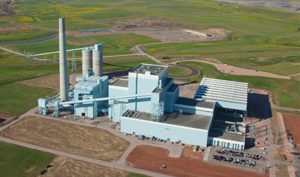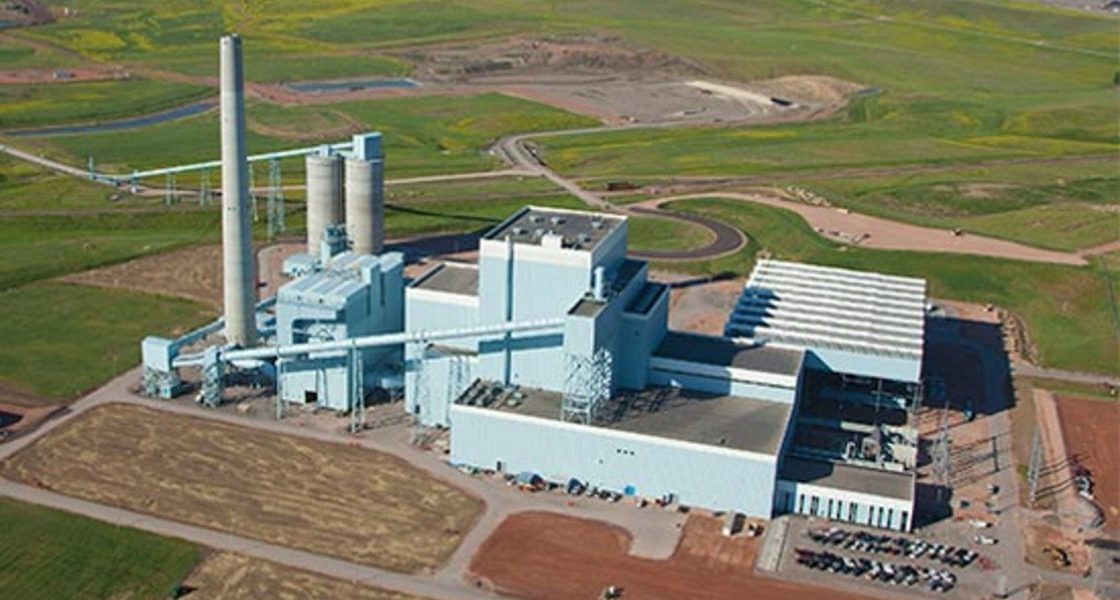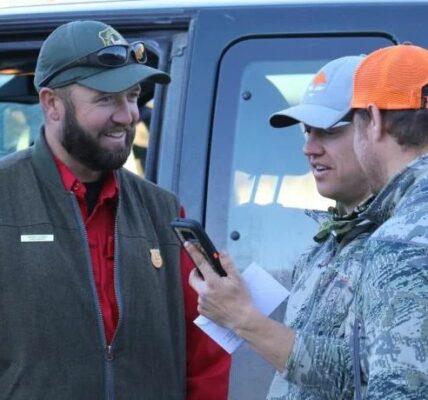By Greg Johnson
Gillette News Record
Via- Wyoming News Exchange

GILLETTE — To a casual passerby, the 109,000 square feet of flat, even crushed red stone is a big empty space. To Dave Gribble, the large research pad at the Integrated Test Center represents even larger potential.
“I think (the ITC) has a lot of potential and it will be interesting to see how things evolve and change from the first set of experiments in all those test bays,” he said about the ITC at the Dry Fork Station power plant north of Gillette.
As senior scientist for Colorado-based TDA Research, Gribble will have a front-row seat to see the next evolution of the ITC as it begins hosting large-scale carbon dioxide capture research.
TDA’s test module became the first research equipment to hit the ground at the ITC this past week, taking up space on the facility’s large research pad to test its novel hybrid carbon capture process that uses membranes and solid sorbent technologies.
Once tied into the 20 megawatts of flue gas available from the power plant, Gribble said he’s confident it will show that TDA’s process of capturing waste CO2 emissions can scale to a much larger volume while maintaining or exceeding government goals for carbon capture.
“Our basic goals and the Department of Energy’s goals are to pull, at minimum, 90% of CO2 and capture that for sequestration,” he said. “The second goal is to sequester that at a purity of about 95% so it could be put into a pipeline.”

Being the first to test at the ITC puts TDA’s project “on the front end” of what has become an extremely competitive scientific race to capture and reuse dangerous CO2 emissions, he said.
That race also is what prompted the state of Wyoming to build the Integrated Test Center, said Jason Begger, executive director of the Wyoming Infrastructure Authority, which oversees the ITC.
To have TDA’s equipment on the ground and ready to start testing “is exciting and it really shows a good example of the complexity of scaling up these technologies and what it takes to build a facility that meets the needs of researchers,” Begger said.
• Built to scale
Making that leap in research where something can go from just being possible to being practical is part of what the ITC brings to the table as the only facility in the United States capable of hosting research at a scale that starts to come close to actual power plant emissions, Begger said.
For TDA, that means its membrane technology, which is being funded through a DOE grant, showed promise at the National Carbon Capture Center in Alabama, but the maximum flue gas available for research there is 1.25 MW worth. That’s enough for early stage testing, but the ITC’s 20 MW capacity makes it “the graduate school for these research projects,” Begger said.
For TDA, that means the ITC will allow researchers to not only test its technology for handling more flue gas, but also test operating the equipment at that level.
“The big thing is how deeply you can put the CO2 onto this material and how quickly you have to change the beds,” Gribble said.
The equipment was being set up this past week and will be tied into Dry Fork’s system to gain access to the flue gas over the next couple weeks, Gribble said. After that, he expects TDA will be testing its process at least through mid-summer next year.
“We’d like to get at least a couple of months of continuous operations,” he said. “We’ll test depending on how long we can keep going before we run out of our current funding.”
Taking their process beyond the drawing board stage is important to continue to get support and funding to advance carbon capture research, Gribble said.
“In general, I think we’re pretty proactive in doing field demonstrations where we have the opportunity to do that,” he said. “It’s an opportunity to get real-world experience. It’s one thing to do something in a lab. It’s another thing altogether to get the real stuff coming out of a coal-fired power plant with all the impurities and everything.”
• Just the beginning
While TDA is the first to be on the ground at the Integrated Test Center, it will soon have plenty of company.
The NRG COSIA Carbon XPrize will occupy the ITC’s five smaller test bays, each 23,400 square feet. Those five finalists in the group’s $20 million carbon solution competition are building their technologies and in the process of getting needed approvals from the state Department of Environmental Quality, Begger said.
They’ll likely bring their modules to the site by late December or early January and test through the summer before being judged on which captures the most CO2 and turns it into the most valuable products.
The XPrize had originally set a timeline that would’ve announced winners by March 2020, but it’s extended the competition by six months.
The technologies that will be tested at the ITC propose a range of uses for captured CO2.
•Produce methanol
•Make a type of fuel
•Create a chemical feedstock
•Produce a biocomposite foam plastic
•Make carbon-based building materials
•Making other substances from CO2 that can be useful in industry
The focus is not only to develop new carbon-based industries, but to revolutionize the thermal coal industry, Begger said. If CO2 weren’t a concern, “that would be game-changing,” he said.
“We know that in order to see these power plants that are left not only survive, but thrive, we’re going to need some technology breakthroughs,” he said. “We’re really one of the only places around willing to do this type of research.
“You can’t do it without a carbon solution and Wyoming is really the place pushing for that.”
Global reach
While TDA is the first to use the ITC, it won’t be the last. The large research pad has been set up to be versatile enough to handle one very large project or two large projects at a time, Begger said.
Japan-based Kawasaki has already committed to test its carbon capture technology at the ITC. The state of Wyoming also has an agreement with the Japan Coal Energy Center, which is collaborating with Columbia University to test a technology that will use flue gas and coal ash to develop building materials.
“That’s particularly interesting to the Japanese in that it deals with their CO2 and coal ash issues,” Begger said. “They would really like to see this evolve into large-scale projects.”
The DOE also is going through a process now to whittle down candidates for two very large $50 million carbon capture research efforts. There are now six finalists, Begger said, and two of those have already expressed interest in doing their research at the ITC.
The University of Kentucky and San Francisco-based Membrane Technologies Research both could be chosen, which would mean the ITC would have the potential of hosting $100 million worth of carbon capture research that could run through 2024.
The evolution of carbon research over the past five years reflects what the ITC has become over that time, Begger said.
It began in 2014 when former Gov. Matt Mead pushed the project and the Legislature appropriated $15 million to build the Integrated Test Center. Tri-State Generation also contributed $5 million and the National Rural Electric Cooperative Association $1 million, for a total of $21 million.
As important as funding has been, the buy-in from Basin Electric Power Cooperative has been irreplaceable, Begger said. It has allowed the ITC to locate adjacent to the Dry Fork Station power plant and tie into its flue gas for testing.
“You can’t underestimate the value of Basin Electric stepping up and offering the Dry Fork plant as the location to do this,” Begger said. “For Basin Electric to be so forward thinking is key to all of this. We’re not seeing a lot of other utilities raising their hands to do research like this.”






